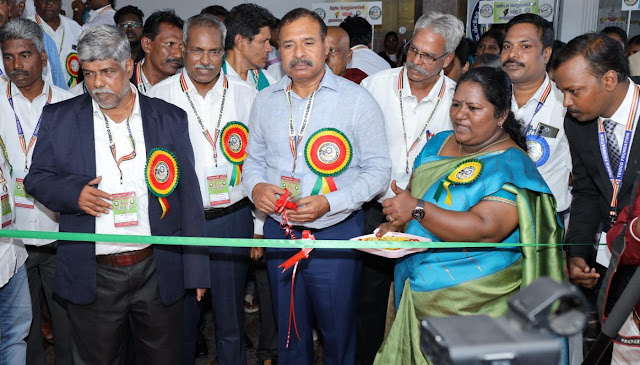• LANCET ARTICLES IN GLOBAL GEOGRAPHICAL INEQUITY IN DEABETES – PROF. DR.NIHALTHOMAS, DEPARTMENT OF ENDOCRINOLOGY, CMC – PRESS MEET.
In 2021 the global burden of diabetes is projected to exceed 521 million patients. There are huge issues in terms of the life expectancy and complications with regards to diabetes across the world, depending on the socioeconomic status, regional (Country and continent based presentation), ethnicity and other factors which would ultimately define inequity directly or indirectly. For example, in a low-income country the life expectancy for a patient with Type 1 diabetes would be 13 years, whereas in a high-income country with all its resources, the likelihood of life expectancy would be greater than that of 65 years, for a similar child. There is a disproportionate increase in the number of patients with Type 2 diabetes across lower middle-income countries (LMICs), and 3 out of 4 adults with Type 2 diabetes will emerge from LMICs.
In this research article, excerpts (from Pages 8 and 9) focus on South Asia, which has a population of 1.9 billion, of which 1.45 billion live in India. Diabetes in South Asia in terms of numbers is likely to grow by 68% before the year 2050. South Asian people with diabetes have lower BMI values than European individuals. Moreover, diabetes affects young people more disproportionately in South Asia, even in the absence of high BMI. Thus, although south Asian people who are overweight tend to develop the metabolic syndrome and diabetes, a normal weight status does not preclude them from developing the metabolic syndrome as much as it does in European populations.
The historical impact of the social determinants of health are responsible for the manifestations of diabetes in south Asia, which may induce social factors to increase vulnerability and result in negative health outcomes. Therefore, these elements of inequity culminating in chronic ecological stress, colonisation, famines, and wars which have impacted the development of the region, including historically poor education, lower socioeconomic status, and reduced decision-making power of woman in the past.
In some parts of the country in the previous millennium, the quantum of physical work that a woman used to do within the scope of pregnancy within the household and in the field was disproportionate to the nutritional intake, having a significant impact on foetal growth and development. The social norms that were present in the past have vastly improved, however their intergenerational impact is still being felt. This is due to a mechanism called intrauterine programming.
When the Foetus is exposed to inadequate nutrition in pregnancy, it leads to what is called epigenetic changes and subsequently these changes may result in earlier onset of diabetes, hypertension and obesity at a younger age and diabetes has a trend to occur at a lower BMI. This intrauterine impact on long influence on noncommunicable disease, is passed on for many generations- it is imprinted in the genes of the next generation. So the combination of a smaller pancreas, insulin resistance due to an excessive quantum of fat for a relatively lower body weight and a rapid economic transition may make the pancreas more prone to early failure and early onset diabetes. The legacy effect is that diabetes besides being common in urban affluent communities is also emerging as an equally important problem in Rural areas and urban slums.
The most striking example of chronic malnutrition can be embodied in the fact that between 1830 and 1980, that the average height of an Indian had not increased, and contrary to that the height of Europeans over 150 years had increased by 15 centimetres, during the same time period. More recently there has been a 5 cm height gain in Indian children compared to their parents and it is associated with increased obesity. Diabetes in children and adolescents is also increasing, so also the complication rates. The exposure to environmental pollutants and chemicals is also a risk factor for the earlier onset of diabetes. Inbreeding and consanguinity also increase certain forms of diabetes. Of course energy rich foods are vastly and easily available and are cheap, and healthy, low calorie food is likely to be more expensive.
As mentioned before Indians from an early age have lower muscle mass in general with higher amounts of fat per kg and smaller abdominal organs when compared to the western population. There are also forms of diabetes which tend to occur early in age which have profound insulin deficiency (which is not Type 1) and have very low BMI (<19kg/m2) which have a different physiology from Type 1 diabetes and do not have the characteristics of type 2 diabetes.




Comments
Post a Comment